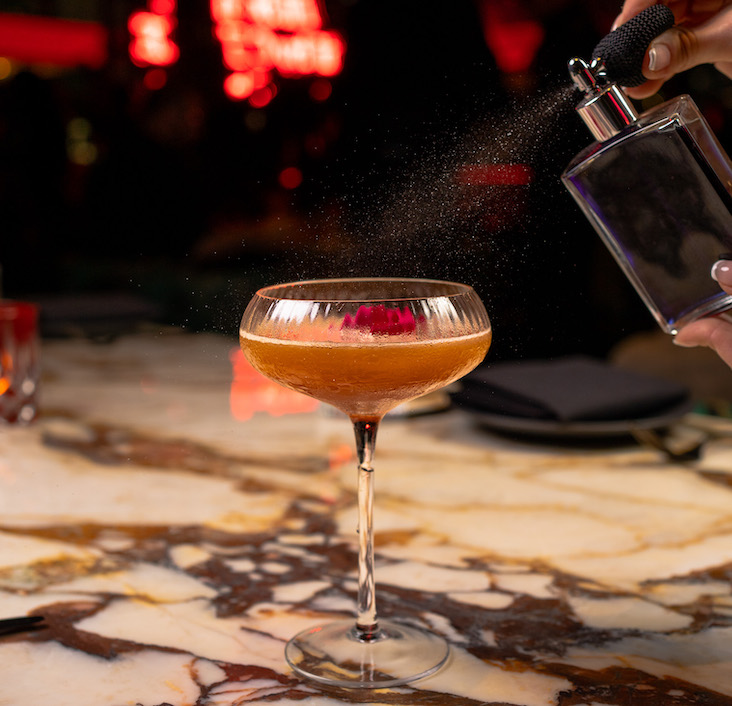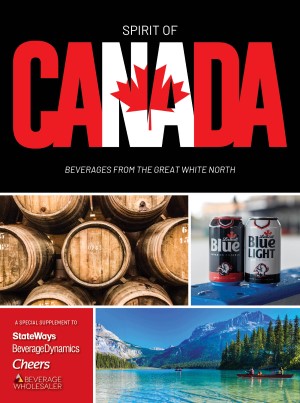Brave New Wine World
Technical innovation in wine closures has brought the potential
of great change to restaurants in America.
G-3 Enterprises Royal 90 Screwcaps
BY JACK ROBERTIELLO
Maybe some observers wrote it off as just another experiment, but the big news out of Bordeaux this summer had nothing to do with futures prices or negociant scandals – it was the announcement that Chateau Margaux had put two cases of its second line wine under screwcap.
The director of Margaux went beyond the notion that screwcaps are acceptable only for inexpensive white wines meant to be drunk young.
“I can certainly see the benefits of screwcaps for whites and would be very interested in using them for young reds that will be drunk within five years,” director Paul Pontallier said in European reports.
Just a few years ago, most wine professionals shuddered at the idea of serving wine sealed with anything other than cork. While the screwcap’s metal closure offers a way out of the cork taint that ruins flavors and aromas in up to 10% of wines, screwcaps also promised a host of service issues. “What will our customers think when I bring a wine with a screwcap to the table,” they fretted. “How can I train my servers to handle the complaints?” “And anyway,” they would say, “no producer will put really good wine in bottles with anything but cork.”
That was then. Now some of those professionals are seeing things in a different light. As more brands of wine arrive with screwcaps, they’re adapting to alternate packaging.
WHY CHANGE?
What’s causing international winemakers to seek alternate closures for their wines? It’s called TCA, a chemical substance that contaminates cork and gives wine a nasty, wet cardboard aroma. Estimates vary, but it’s safe to say anywhere from 3% to 10% of wines suffer from noticeable corking. Even at the low end, corking makes wine at least unpleasant and may put many new drinkers off wine completely.
Many winemakers in California switched to synthetic corks in the past few years to eliminate TCA, but the results seem mixed. Some privately complain that synthetics dull and flatten their wines and they’re paying careful attention to consumer response as screwcapped wines become more common.
Napa chardonnay, Black Box Wines
Some winemakers claim screwcaps not only solve problems but actually make their wines taste better, as Randall Grahm of Bonny Doon said at the 2004 Monterey Wine Festival.
The jury is out on longevity, but one after another companies selling wines meant to be drunk within a year or two of bottling are ditching corks fast enough to make the cork makers sweat.
BRING IT ON
Ken Collura, wine director of El Monte Sagrado, Taos, NM, says he welcomes the new world of alternate choices, and his customers have as well. “When I bring a New Zealand sauvignon blanc to the table, no one says to me ‘Oh, my, it looks like you’re serving me MD 20/20.’ We’ve had absolutely zero bad reaction from customers who we’ve served screwcapped wines.”
Collura cites another key advantage that’s driving alternate closures: longer lived wines for by-the-glass programs. “If I open a bottle of Le Cigar Volant [a red wine produced by screwcap enthusiast Grahm at Bonny Doon], I get four or five extra days by having it in screwcaps before it turns. Ironically, I don’t think whites last as long, but it almost doubles the life of some when compared to wines bottled with cork.”
“I’m 100% behind it,” Collura says.
Even those a bit doubtful about fine wines under screw admit that their customers are adapting.
“I don’t have any problem with screwcaps,” says Ron Balter, sommelier at Chicago’s Italian Village. “They still need to work out some kinks but it’s perfect for wines meant to be served young – pinot grigio and sauvignon blanc, for example” Balter serves Villa Maria Sauvignon Blanc by the glass, for instance, and his customers have not reacted unfavorably. “They may be a bit surprised but since, except for Plumpjack, the wines [under screwcap] aren’t especially expensive, a lot of people don’t have a problem.”
Almaden Red Sangria
Balter says the jury is still out on how well wines meant to age will do under screwcap, and believes the romance and traditions of fine wine will be a barrier to a mass switch to other closures at the high end.
But even his customers, prepared for the high-end wines the Italian Village carries, are flexible; Balter’s served more than 700 splits of Zardetto Prosecco topped with a screwcap in the last nine months with no negative customer reaction.
The romance factor also gives pause to Matt Swingos, owner, Swingos on the Lake, Lakewood, OH. “If I owned a Las Vegas hotel, maybe, the novelty would be a plus. But my customers expect a little something extra, and when we decant the wines or present the cork, that’s something they’re willing to pay for. I don’t think it would be the same otherwise.”
BAG IT
David Smith, beverage director for the 50+ unit Pappas Restaurant Group, Dallas, says training is a key to handling the introduction of screwcapped wines. When his supplier of New Zealand sauvignon blancs shipped screwcaps without notice, customers and servers were confused by the new packaging, automatically connecting screwcaps with cheap wines. Customers didn’t fare any better without an explanation, and Smith pulled the wines out of his restaurants within two weeks. But once servers learned why the wines were sealed with screwcaps and the wines were supported with promotion, as Brancott Sauvignon Blanc was recently, they sold very well, he says.
Bliss Box
Smith is also enthusiastic about the next wave of alternate packaging: wine in the bag. “I’m hoping that we’ll soon get some high quality wine this way. It would work great for our by the glass program,” he says, citing longer shelf life, easier handling, less waste and better quality control of the wine. While the Pappas restaurants do buy 18-liter bags of Gallo’s William Wycliff wines for use in the kitchen, the brand doesn’t fit the quality level Smith is seeking.
International trends don’t always make it in the US but it’s worth a look at what’s happening in countries where wine in the bag, (also called box wines) have a better reputation. According to Decanter magazine, a leading UK wine journal, box wine is on fire in Norway, where more than 40% of wine is sold that way; in Australia, it’s more than 50%.
Wine like California’s Black Box vintage varietals have given bag fans the hope that winemakers will continue to increase quality. The time may have come: a French vintner has recently shipped declassified Chablis to the US market packaged in a bag, and word is that some well-known fine dining establishments are serving lots of the well-received wines by the glass.
DOWN UNDER
Obviously, New Zealanders have embraced screwcaps enthusiastically, partially in response to supermarkets in their big UK market, which insisted that many winemakers switch to screwcaps. In fact, Villa Maria, perhaps the best-known New Zealand winery in the US, has decreed that their entire 2004 production will be bottled under screwcap. The company owner has said he’d rather turn down orders than put his wines in bottles sealed with cork.
Hogue Cellars of Washington is, at last count, the largest US producer of premium wines under screwcaps, with more than 300,000 cases shipped this year. Perhaps Kendall-Jackson’s Pepi, now above 35,000 cases, or J. Lohr’s recently launched Cypress will surpass Hogue.
Cypress wines, J. Lohr
Who else has taken the leap into the brave new wine world? WillaKenzie Estate in Oregon has only a few thousand cases of pinot noir, pinot gris and pinot blanc under screw, but they retail at the premium range – $18 to $36 a bottle. The new TwoTwo Farms brand from Beringer screwcapped its entire 35,000 cases of chardonnay and merlot. Sonoma-Cutrer seals its best wines with screw caps, the limited production Founders Reserve Chardonnay that winemaker Terry Adams selects from favorite barrels. The very low production (about 1,500 cases) wine sells for $65 retail.
And Margaux is not alone among the Bordelaise. Early this summer, Andre Lurton said that wines from three chateaus under his control would offer wines under screw.
ON THE BLOCK
Just when purists were struggling to deal with screwcaps, and contemplate serving wine in a bag, along comes another new-fangled innovation – wine in blocks.
Used to package fruit juices and shelf-stable dairy items, aseptic Tetra Pak cartons are made from layers of paper, aluminum foil and plastic. Two brands sold this way were introduced in 2004. One, Alamden’s Tetra Pak Prisma 500ml carton, offers Sangria for the supermarket and convenience store channel. The other, Bandit Bianco Trebbiano, comes from Three Thieves, which already bottles Zinfandel in 1 liter screwcap jugs. With Europeans routinely packaging low-end wines this way, the retail chain, at least, can count on many more introductions in 2005.




